This story from the Australian Aviation archives is from December 2011, when Owen Zupp took the Tecnam P2002 Sierra on a flight test.
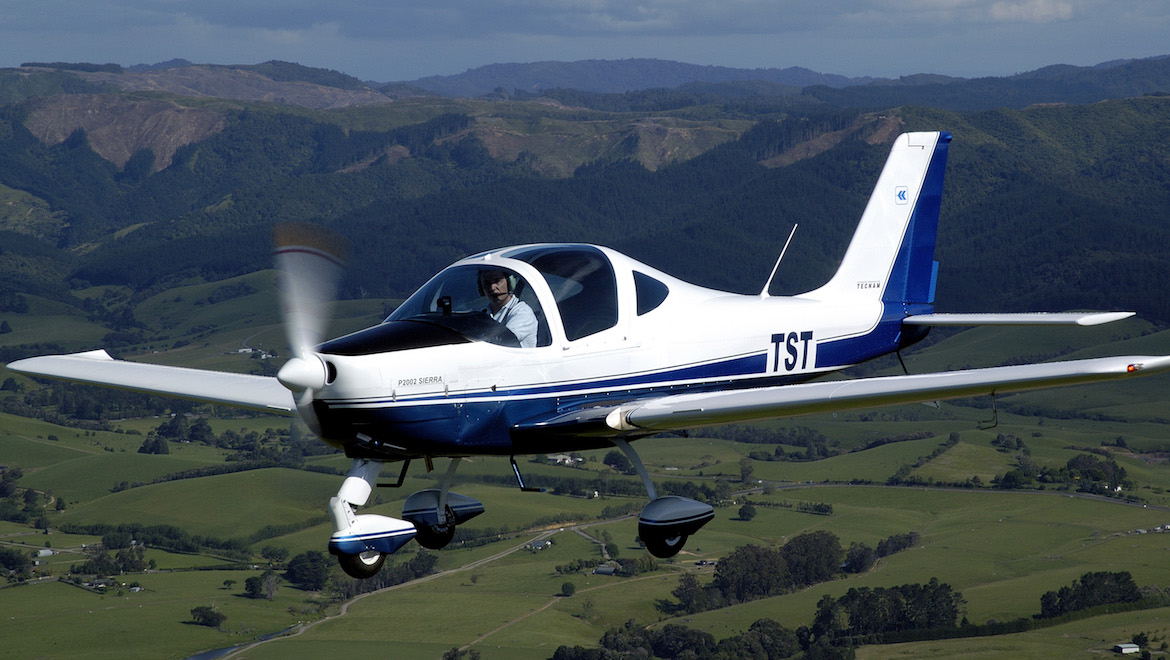
The range of two-seat light sport aircraft appearing on the market is growing at a tremendous rate.
Throughout this growth the Italian manufacturer Tecnam has continued to put forward a number of models that can comply with both the RA-Aus and fully certified VH realms. Its sporty low-wing variant, the P2002 Sierra is one such aircraft from the expanding Tecnam stable.
Simple Simplicity
It was a grey, overcast day that almost bordered on being bleak as I walked into Wagga Air Centre and met operations manager, Marty Peters. In stark contrast to the clouds above, Marty was upbeat and exuded that enthusiasm that emanates from people who just love to fly.
As if controlled by his personality, the showers paused and the grey skies opened up to suggest that today’s airtest may go ahead, so without further ado we walked to the apron where the Sierra stood waiting.
My first impression of the aircraft was “diminutive”. With a 8.6m wing span and reaching a little over 6.6m from nose to tail, the single engined low wing aeroplane sat around 2.4m tall atop its tricycle undercarriage. Thus with an average empty weight of only 340kg, it is easy to appreciate how this little aircraft comfortably slots into the LSA category.
And yet specifications only tell a part of the story – these facts and figures are sweetly combined in an aircraft of rather sporty lines. A smoothly rounded cowling, a sliding almost-bubble canopy and swept fin give the aircraft a “coupe” appearance that seems to evade its high wing counterparts to some extent. As I walked around the Sierra I soon found that its form also bred functionality.

Powered by the prolific Rotax 912S engine, it burns about 16 to 18 litres per hour to achieve a TAS of around 100kt. Marty explains that for a margin of safety and the simplicity of arithmetic they plan on 20 litres per hour, which when divided into the 50 litres of fuel carried in each wing equates to five hours of flight time without reserves.
The castoring nose gear possesses a simple rubber bungy means of shock absorption, while the intakes below the two bladed propeller give the aeroplane a “chin” that sits nicely with its personality. The wings are a relatively simple plan form with a stall strip on each leading edge and slightly upturned fairings at the tips.
The ailerons are mass balanced, while the empennage is fitted with an all-flying tail, or “stabilator”. There is a sprung tail skid on the other side as a safety measure, but the nose would be sitting fairly high for it to come into play, I would suggest.
The port wing is home to a landing light in the leading edge, while all the anti-collision and navigation lights required for night certification are also present. On the trailing edges, electrically actuated flaps sit inboard of the ailerons. The wheels are fitted with fairings, and the overall finish of the aeroplane is very tidy.

Access to the cockpit is via the leading edge, stepping onto the wing with the assistance of a step. Entering the cockpit is achieved by stepping down onto the main spar and then lowering oneself onto the seat. The seat is easily adjusted fore and aft on rails by raising a lever and sliding the seat.
Once in position, the cockpit is of a comfortable size with easy access to the tools of trade by a series of pockets or a small baggage area behind the seats. Like the external appearance, the cockpit is very neat and this offers an important insight into the Sierra.
Since their inception, one of the questions that have been repeatedly posed relates to the durability of an LSA in the working environment of a flying school. Today’s Sierra is a classic case study, having flown nearly 1,000 hours in the commercial world and still looking like a new aeroplane. There are no tell-tale signs of a worn interior or cracking panels that would suggest a degree of susceptibility – in fact quite the opposite is the case. The appearance of this Sierra would sway a prospective student pilot towards training far more than the weary Cessnas and Pipers that inhabit many flight schools.
I secure my four-point harness and ensure the brakes are parked by a substantial hand activated brake lever and a small red selector on the centre console. Ahead of the lever sits two small fuel shut-off selectors that are also red, and I align these both to the fuel “on” position. Substantial dual control sticks originate from the floor and incorporate both push-to-talk and electric trim switches in the hand grip.
The lower lip of the flight panel has switching for the “Master” and ignition ahead of the pilot, throttle, friction and flaps centrally, while the right hand side plays host to lighting selectors and a 12 volt cigarette lighter-style jack. A second throttle is located on the far left of the pilot’s instrument panel and effectively offers the option to fly left or right handed.
Equipped for basic VFR flight, the pilot’s panel is fitted with primary flight instruments while the opposite panel is home to the engine instruments. The two are divided by a relatively blank centre panel that houses a VHF Comm unit, but has the space to house any type of GPS or EFIS panel you can imagine. In the absence of these avionics, the Wagga Flight Centre has wisely attached a blown up aerodrome chart featuring the critical information that is relevant to Wagga Airport.
As a last action before getting underway, I slide the canopy forward, taking care not to catch my head with the slightly lowered front lip. While care is exercised in this motion, the canopy actually provides more than adequate headroom and tremendous visibility once closed and locked by virtue of three catches. Orientated and feeling at home in the Sierra’s cockpit, it is time to start the Rotax and take to the still threatening skies.
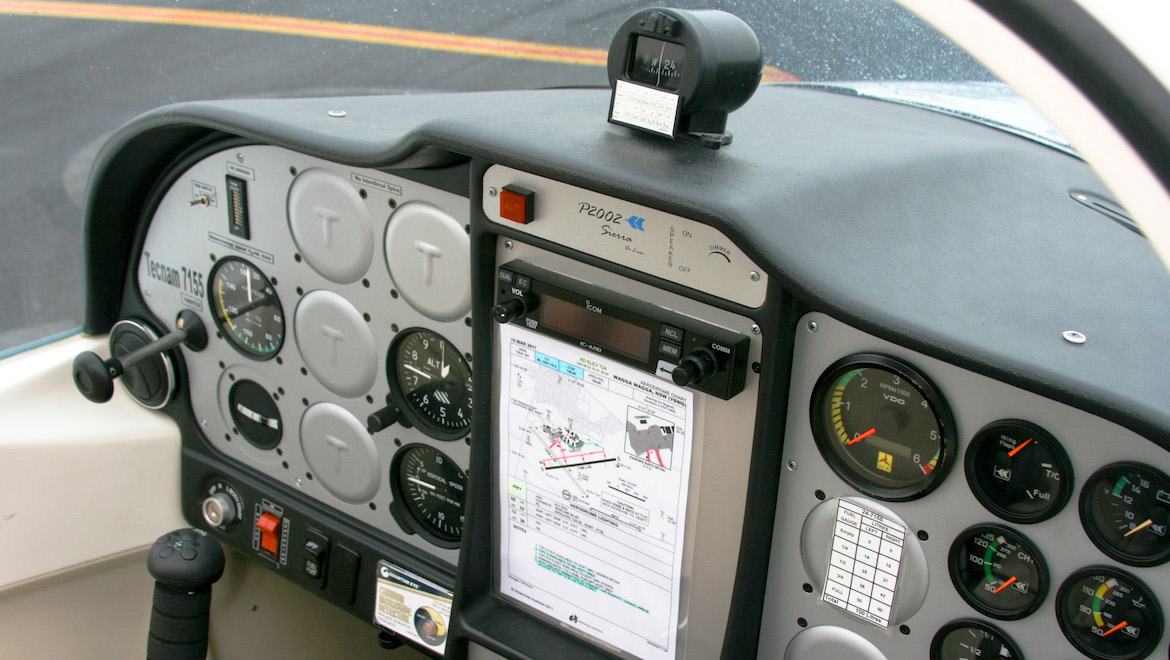
High Sierra
Typically, the Rotax starts with minimal delay and we are underway to complete our engine run and pre-takeoff sequences. The Sierra is very easy to taxi, with the only trick being the hand actuated brake lever on the centre console in the absence of toe brakes, which can be found on later models.
For this reason, I err towards using the centrally placed throttle as it requires me to take my hand off the throttle to apply the brakes. Using the throttle to the left could invite a situation where brakes are used against power. Once parked, the engine run-up at 3200rpm and checklists are completed in a very straightforward manner and the aircraft is configured with the first stage, or “T/O” setting for takeoff.
Lined up on Wagga’s runway 08, I open the throttle and the Sierra responds immediately, accelerating impressively. Takeoff speeds are as simple as 4-5-6. The aircraft comes alive at 40kt, I rotate at 50kt after less than 200m and set the attitude for the climb at 60kt. At 300ft, the flap is selected up and a slight pitch change occurs as a new climb speed of 70kt is attained as we turn crosswind for departure. Established to the north of the airport, we find an area of higher cloud base and quickly enter into the upper air sequences before our window of opportunity closes.
The aircraft is quite crisp in the roll by virtue of its low aspect ratio wings. Rolling from one limit turn to the other takes about six seconds and is easily achieved with a minimal amount of rudder input to maintain balanced flight. Marty warns against a significantly lower power setting to achieve a low speed cruise, so the engine is reduced from 5000rpm to a comfortable 3200rpm and a stage of flap is extended once below 67kt and within the white arc.
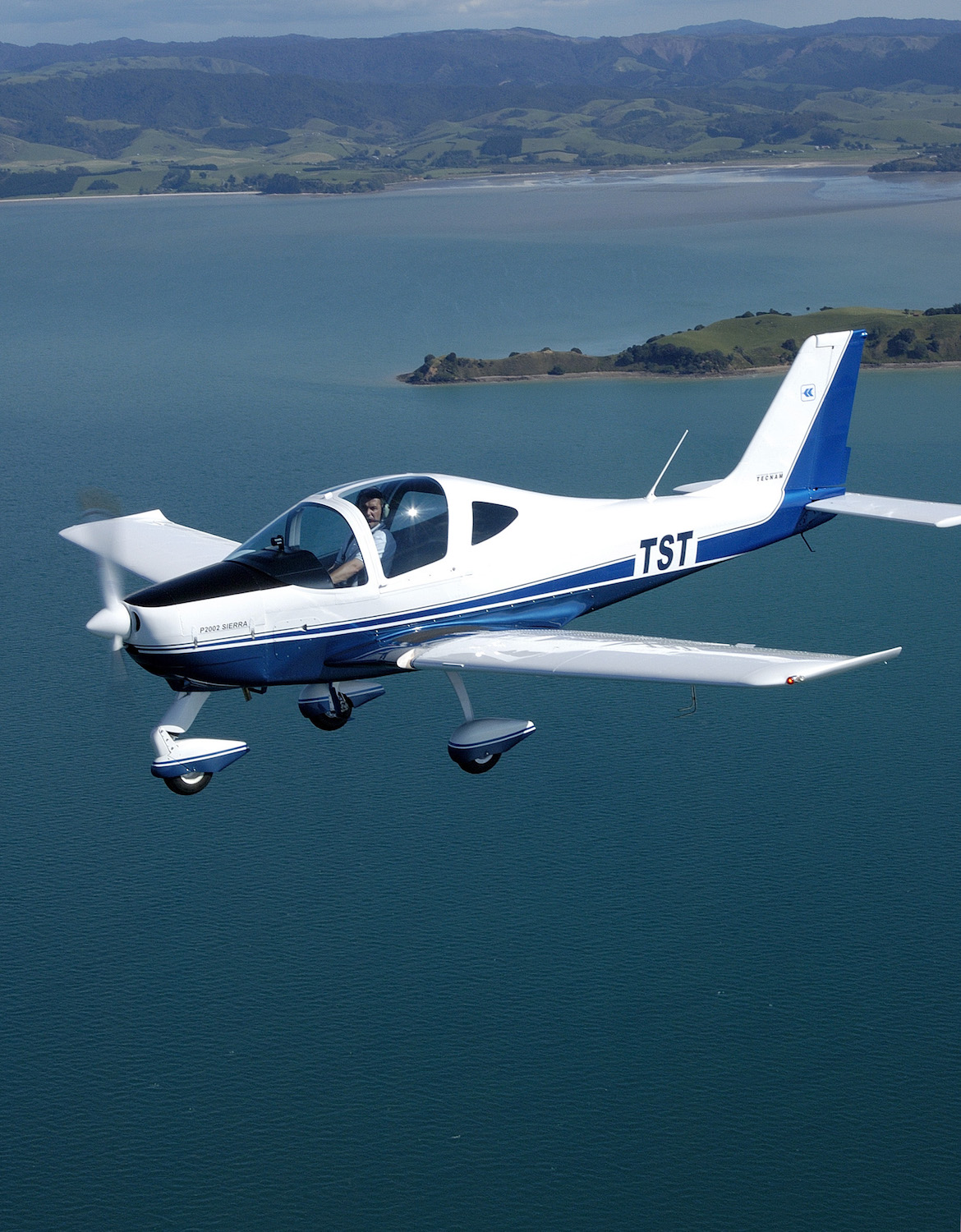
Configured in this manner, the aircraft is extremely stable and offers a very slow cruise with equally sound handling in roll. Retracting the flaps and accelerating once again, we complete our checks to look at the stalling characteristics. As one would expect, stalling the Sierra, like so many other modern trainers, is a non-event. There’s a reduction in airspeed, a predictable buffet and a smooth symmetrical pitch down. As I said, a non-event.
By this stage the weather was chasing us once again, so we descend and track back to the airfield to fly a series of circuits. As I am becoming accustomed to doing, I reduce the power to 3000rpm and maintain the attitude to allow the lightweight Sierra the chance to decelerate into the white arc. Marty suggests flying the first approach and landing with only the first stage selected and a speed of 65kt. I comply and the Sierra sits sweetly on the step around base and final, making a constant approach path very easy to maintain. Over the fence, I retard the throttle and hold the Sierra off just slightly before the wheels touch and we’re on the ground. I advance the throttle and in a flash my 4-5-6 prompt for takeoff has been and gone and we are climbing away once again.
After another single stage of flap approach, I choose to use full flap for landing with an approach speed of 60kt. Everything is standard and then on the base leg I select full flap. Wow! The flaps bite like barn doors, the nose attitude is much lower and it feels like we’re hovering. These are effective flaps trailing from this little wing and it seems like days before we reach the threshold, where an extra degree of flare is required to establish the aircraft in the correct landing attitude and protect the nosewheel.
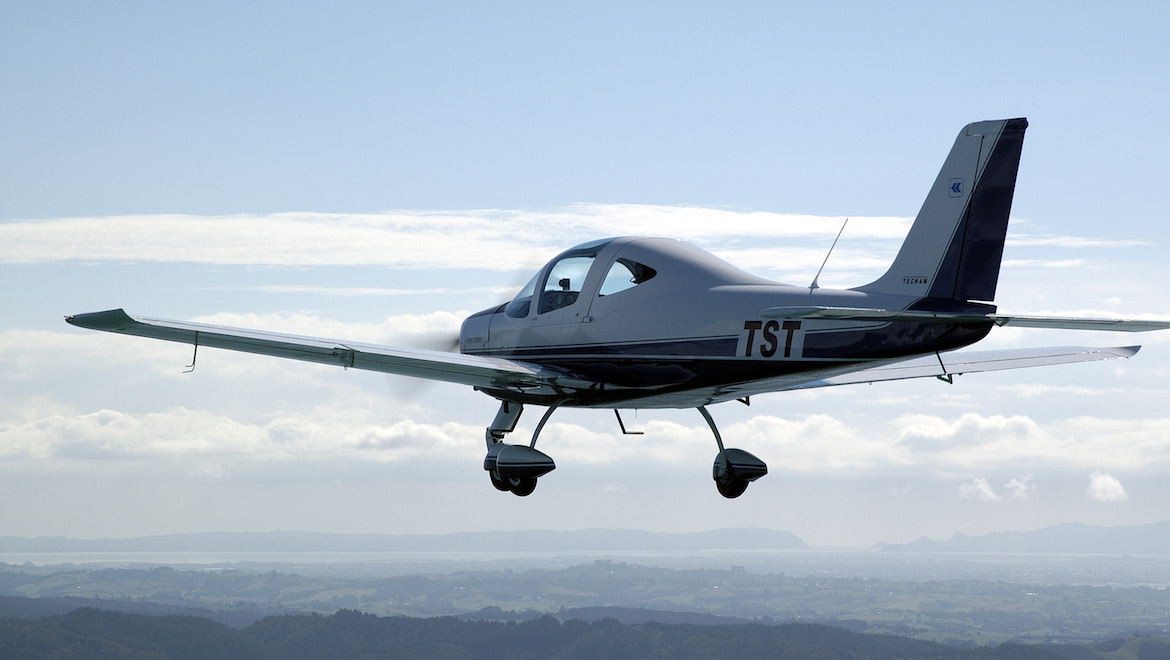
On the next circuit I fly a glide approach, and armed with my newfound knowledge I wait until I am extremely assured of making the field before selecting full flap. Once selected, full flap offers a very stable and slow approach – a useful attribute should a forced landing genuinely occur and the field is on the short side of ideal.
I fly another circuit and a missed approach, but the weather is finally gaining the upper hand and the showers are now at the field. With my appreciation of the full flap approach, I choose to finish the session with a short field landing and see just how short the aircraft can land.
The STOL landing merely bleeds the speed back further to 55kt on short final and seeks to achieve the desired touchdown point, rather than an ungainly float. As I come across the approach lighting prior to the threshold I wash off five more knots and hold the speed until the main wheels touch down on the keys. Simple. So simple that with traffic behind us I opt not to use the brakes, and even so I am confident that the ground roll was only about 100 metres or less. As I exit the runway, the sky has turned from grey to black and the rain starts to strike the windscreen. Fortunately, we have managed to beat the weather.
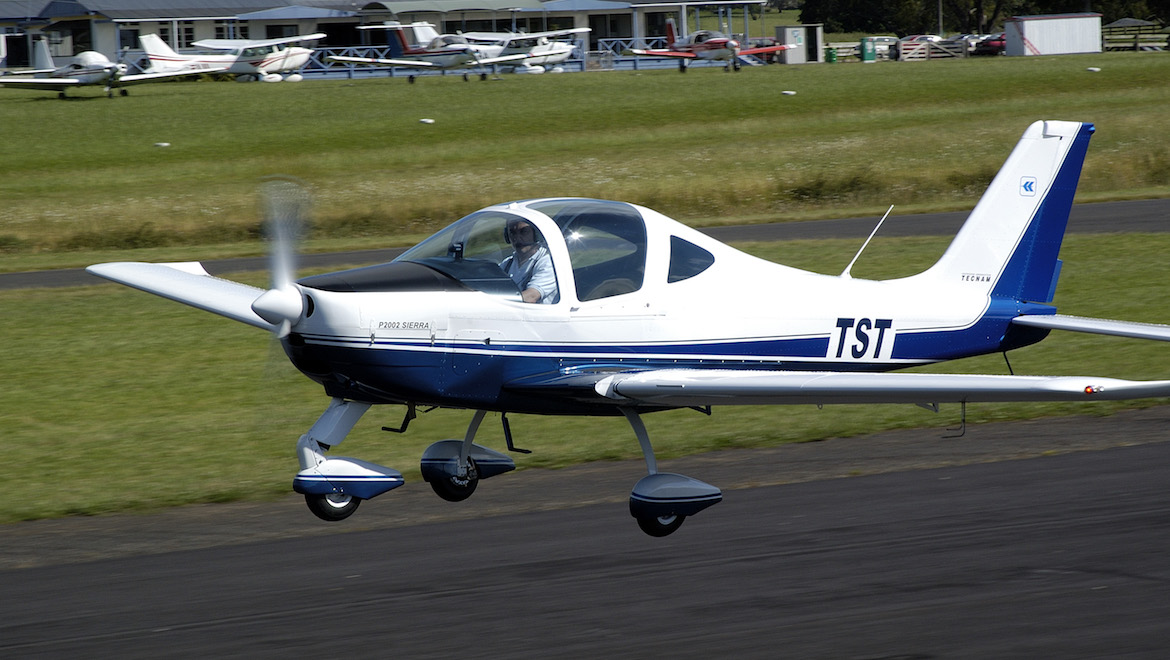
A Simple Choice
Having parked the Sierra, I exit and contemplate its form once more and yes, it is pleasing to the eye in a simple, almost innocent style. And so too is the aircraft once it is in the air, free of vices and light on the touch.
The P2002 Sierra is an easy aeroplane to fly and provides a good deal of fun in the process. The fact that this working trainer looks like new dispels any reservations about the durability of the type, and its low running costs speak for themselves.
The Tecnam P2002 Sierra is the type of aeroplane that feels at home as a personal touring aircraft or on the line training new aviators in the craft. Either way, it provides a friendly platform and a no-nonsense style. Simply put, the Tecnam Sierra is simple simplicity at its best.
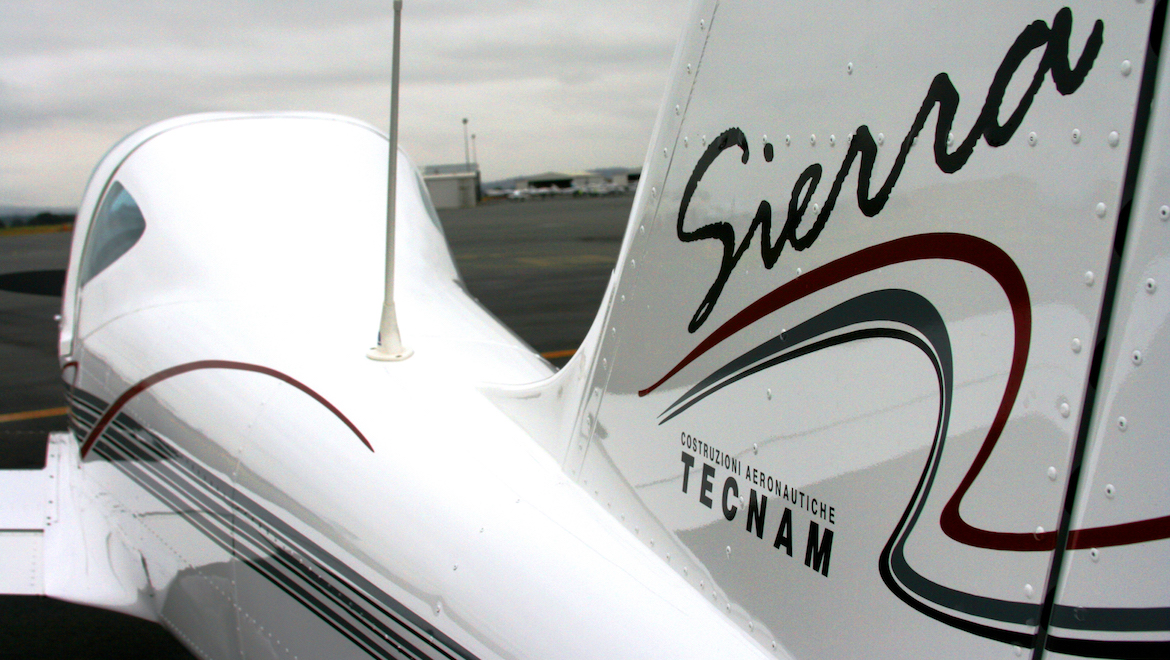
This story first appeared in the December 2011 edition of Australian Aviation.













